One of the most intriguing questions for Muslims and Quran enthusiasts alike is, “How many Sajdahs are in the Quran? Sajdah, or prostration, is a deeply meaningful act of worship in Islam, and its inclusion in the Quran holds special significance. This article will explore the concept of Sajda-e-Tilawat, examine the number of Sajdahs in the Quran, and cover various related topics to enrich your understanding.
Sajda-e-Tilawat Meanings
Sajda-e-Tilawat, also known as the Prostration of Recitation, is a specific act of prostration performed upon reciting or hearing certain verses of the Quran that contain a command to prostrate. These verses are scattered throughout the Quran, and performing Sajda-e-Tilawat is an expression of obedience and submission to Allah.
Are There 14 or 15 Sajdahs in the Quran?
A common point of discussion is whether there are 14 or 15 Sajdahs in the Quran. According to most scholars, there are 14 Sajdahs that are agreed upon, but there is an additional Sajdah in Surah Sad (38:24) which some scholars count, making the total 15. This slight variation is due to different interpretations and schools of thought within Islamic jurisprudence.
What Are the Three Types of Sajdah?
There are three main types of Sajdah in Islam:
- Sajda-e-Tilawat: Prostration during the recitation of specific Quranic verses.
- Sajda-e-Shukr: Prostration of gratitude performed when a Muslim receives good news or a blessing.
- Sajda-e-Sahw: Prostration of forgetfulness performed during Salah (prayer) to compensate for minor mistakes.
How Many Sajdahs Are in the Quran?
To directly address the keyword, the Quran contains 14 to 15 Sajdahs, depending on the scholarly interpretation. These prostrations are significant acts of worship and reflect the depth of submission and devotion to Allah.
Which Is the First Quran Sajda?
The first Quranic Sajda is found in Surah Al-A’raf (7:206). This verse marks the first instance where Muslims are commanded to prostrate in the Quran, emphasizing the importance of humility and submission to Allah.
Sajda in Quran Dua
Performing a Sajda in response to a Quranic verse is often accompanied by a specific dua (supplication). A common dua for Sajda-e-Tilawat is: “سَجَدَ وَجْهِيَ لِلَّذِي خَلَقَهُ وَشَقَّ سَمْعَهُ وَبَصَرَهُ بِحَوْلِهِ وَقُوَّتِهِ فَتَبَارَكَ اللَّهُ أَحْسَنُ الْخَالِقِينَ”.This can be translated as: “My face has submitted in prostration to the One who fashioned it and granted it hearing and sight by His strength and power. Exalted is Allah, the finest of creators.”
How to Do 14 Sajdahs After Completing the Quran?
After completing the recitation of the entire Quran, it is a commendable practice to perform the 14 Sajdahs as a gesture of gratitude and reverence. To do this, you can identify the verses that require Sajda-e-Tilawat and perform the prostrations accordingly, expressing your devotion and thankfulness to Allah.
When Is Sajdah-e-Tilawat Necessary?
Sajdah-e-Tilawat becomes necessary when a Muslim reads, hears, or recites a verse of prostration from the Quran. It is an obligatory act that should be performed immediately upon encountering such a verse, to demonstrate immediate obedience to Allah’s command.
How to Identify Sajda in the Quran?
In most printed copies of the Quran, verses that require Sajda-e-Tilawat are marked with a special symbol, often a small prostration icon (۩) in the margin. This helps readers easily identify where they need to perform the Sajdah.
At Al-Walid Academy, we are dedicated to helping you connect with the Quran and master the Arabic language. Our specialized courses include:
- Quran Memorizing: Our expert instructors guide you through the process of memorizing the Holy Quran with proper Tajweed, ensuring accurate pronunciation and retention.
- Quran Reading Basics: Perfect for beginners, this course covers the fundamentals of reading the Quran, focusing on correct pronunciation, fluency, and understanding.
- Islamic Studies: Dive deeper into the teachings of Islam with our comprehensive Islamic Studies program, which covers various aspects of Islamic knowledge, history, and practice.
Join us to enhance your understanding and practice of the Quran with expert guidance. Start your spiritual journey with Al-Walid Academy today!
How Do I Perform Sujud Tilawah?
To perform Sujud Tilawah, follow these steps:
- Ensure you are in a state of wudu (ablution).
- Turn towards the Qibla (the direction of the Kaaba in Mecca).
- Pronounce “Allahu Akbar” and transition into the prostration position.
- While in prostration, recite the specific dua for Sajda-e-Tilawat.
- Rise from the prostration after completing the dua.
Conclusion
Understanding the significance and proper execution of Sajdah in the Quran enriches one’s spiritual journey and deepens the connection with the Holy Book. Whether there are 14 or 15 Sajdahs in the Quran, performing them with sincerity and devotion is what truly matters.
FAQ
What is the significance of Sajda-e-Tilawat?
Sajda-e-Tilawat signifies obedience to Allah’s command and reflects humility and submission.
Are there any specific times when Sajda-e-Tilawat should not be performed?
Yes, Sajda-e-Tilawat should not be performed during forbidden times of prayer, such as sunrise, sunset, and midday.
Can Sajda-e-Tilawat be performed without wudu?
No, it is necessary to have wudu (ablution) before performing Sajda-e-Tilawat.
How do I know when to perform Sajda-e-Tilawat if I am listening to the Quran?
If you hear a verse of prostration being recited, you should perform Sajda-e-Tilawat even if you are not the one reciting.
How many Sajdahs are in the Quran for Hanafi followers?
Hanafi scholars generally agree on 14 Sajdahs in the Quran.
What should I say in Sajda-e-Tilawat?
Recite the specific dua for Sajda-e-Tilawat, which expresses gratitude and submission to Allah.


